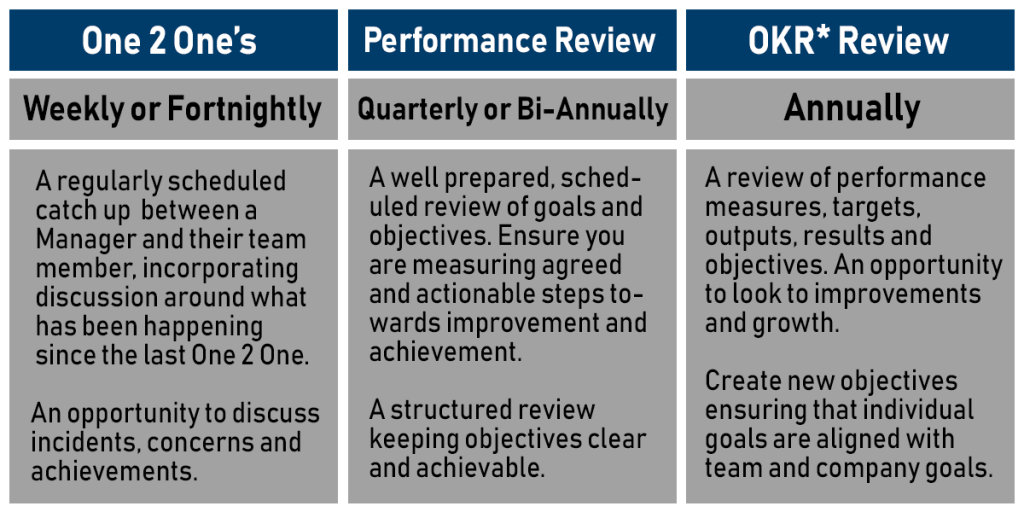
What shape do your performance reviews take? Are they an annual or bi-annual event? Demotivating or rewarding? Dreaded or embraced? Perhaps it’s time to review your process and here’s our guide to inspire you to shake things up.
A reminder, what is the purpose of a performance review?
Conducted by an employee’s direct line manager, a performance review is an opportunity to:
- provide feedback
- evaluate goals
- define plans
- identify strengths and weaknesses
- implement improvements
- progress since the previous review
- review professional development
- improve confidence
- identify areas for development
How often should performance review take place?
This all depends on your company and team culture, do you have regular one to ones with your team members, do your direct reports have an opportunity to approach you with feedback, do you embrace a culture of openness and rewards?
An annual appraisal is not adequate when considering someone’s achievements or areas for development, feedback needs to be conducted in line with other review measures, such as regular one to ones. Who would want to discuss achievements 10 months after the event? It seems irrelevant and unnecessary; it is much more beneficial to provide immediate feedback on the good and the not so good to encourage improvement and conversation.
An example of a performance review schedule could be:
*Objectives and Key Results
Creating a pathway to success
Reviews enable you as a manager to assess goals, measures and identify areas for improvement and more importantly to acknowledge strengths, success and achievements. Once you have identified areas which require development or updating then the discussion needs to turn to professional development, keeping skills and knowledge up to date through reading, professional membership, courses and training if required.
Important guidance
- Your reviews need to be collaborative, not one sided
- Actively listen to what your team member is saying, responding positively
- Ensure you demonstrate measures visually, i.e., in a graph showing expectations and achievements
- Compare the previous year’s annual review to measure performance
- Utilise tools such as SMART and SWOT
- Think of the one-to-ones as ‘check ins’ with your team
Management and leadership of teams can be challenging, but overall very rewarding. To develop your skills, confidence and abilities we recommend qualifications delivered by DLC Training from:
Learn more by visiting https://www.distancelearningcollege.co.uk/courses/leadership-and-management/
Written by Jacky Stansfield Smith CExSCM, FISM



